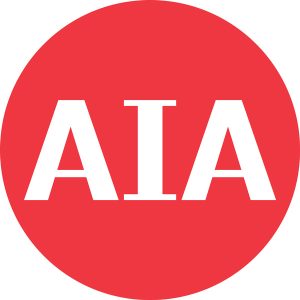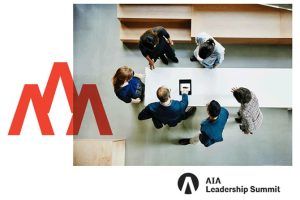The Strategic Plan for 2021-2025 is to advance the twin goals of climate action for human and ecological health and the advancement of racial, ethnic and gender equity in the built environment ... Human and ecological health and racial, ethnic and gender equity will guide AIA’s decisions well into the future.
I am pleased to have the opportunity to contribute to this year’s annual Publication/Directory with a report from the AIA Strategic Council. The Strategic Council is not new to the AIA, but it has recently evolved from a regional council (the six states comprising the Western Mountain Region, WMR) to having 50 state representatives (California, New York and Texas have two each) as well as six at-large leaders who meet to discuss critical issues impacting our profession. I am privileged to be the first AIA Wyoming architect elected to serve on the Strategic Council.
AIA Strategic Plan
The Strategic Plan for 2021-2025 is to advance the twin goals of climate action for human and ecological health and the advancement of racial, ethnic and gender equity in the built environment. This long-term plan has been implemented to allow AIA leadership to adopt policies and procedures guided by this mission. Human and ecological health and racial, ethnic and gender equity will guide AIA’s decisions well into the future.
AIA Strategic Council
The Strategic Council was formed in 2015. It was formed to advance the architecture profession by informing the board and other institute bodies about important professional issues, opportunities, and threats. Although it is not an AIA governing body, the Council’s work is vital to AIA’s ability to serve the profession. AIA Bylaws define in detail the Council’s mission, responsibilities, and composition.
The Council approaches its tasks with an emphasis on an outward and forward-focused vision. In this spirit, the Council focuses on long-term goals and outcomes of AIA’s work rather than the administrative or programmatic efforts that achieve those goals.
Thought Leadership
The Council meets to consider topics based on AIA’s strategic objectives. From that work, it develops recommendations for the Board’s consideration.
Council Recruitment
The Council is a diverse group of over 60 forward-thinking leaders charged with exploring new ideas and solutions to significant issues facing the profession of architecture and its role in society. The Council recruits members annually with the intention that these At-large positions will bring diverse viewpoints to the Council that might not be otherwise represented. This includes people from allied professions, futurists, educators, and other professionals who would not typically become council members through the state representative election process.
Systems Thinking for Cultural Change
Systems thinking involves a variety of skills and core concepts, including the ability to recognize interconnections among parts of a system; to identify how interconnections can combine to form cause and effect feedback loops; to recognize nonlinear relationships among elements in a system; to understand dynamic behavior, and to look at a system in different ways to reduce complexity. The resulting solutions are more anticipatory and adaptive, more attuned to underlying problems rather than their symptoms, and more likely to challenge assumptions and norms.
The Strategic Council has several ongoing projects where topics are identified and discussed throughout the year. At the end of the year, the discussion groups will formalize the reports and pass these along to the board for review or further action. I currently serve on three committees: the Communications Committee, the Value of Architecture Initiative and the Workplace Culture Group.
Value of Architecture
This area of study examines the value of the architect and architecture as it is perceived by the public, by actual and potential clients, and by our communities/society as a whole.
The premise is that, over time, there seems to be less understanding of what architects actually do, what we are uniquely suited to provide, and what the value of that knowledge/expertise is. Additionally, in some sectors, there seems to be growing marginalization of the architect by other players/competitors in the design/construction/development community. This appears to be exacerbated by broad societal trends toward a general rejection of expertise and disruptions to accustomed approaches to executing endeavors such as design and construction. Included in these areas of study are Member Prosperity and Value for our Clients.
Workplace Culture
Our Workplace Culture Group has assembled and scheduled a round table discussion where leaders from highly successful firms will be interviewed. They will discuss the secrets of success. Also discussed will be how to deal with “suffer culture,” or the practice of overworking, underpaying and abusing young architects. The round table discussion will be shared with members across the country.
Technology Impacting Practice
The Technology Impacting Practice (TIP) Area of Study has been a topic of discussion within the AIA Strategic Council for well over five years. This report summarizes research and findings to frame a “no member left behind” roadmap and framework for digital transformation.
TIP’s focus this year was to continue the work from TIP’s 2020 Call to Action Virtual Summit on Digital Transformation’s key problem: frame members’ needs, hypothesize solutions, and validate gaps to create a roadmap to a “no member left behind” framework for digital transformation.
It is imperative that AIA take an assertive leadership stance on the shift to a digital-first practice.
AIA emphasizes decarbonization under its Code of Ethics. Ethical Standards of Knowledge and Skill of the members is also a vital concern. Our profession is at a crossroads and must address the three most important challenges of our society and environment. Given the radical changes in our environment, climate change must be urgently addressed. Members must have the tools and knowledge to move toward net zero or net positive buildings and developments.
We must equip our members to support AIA’s goals and the strategic plan through an urgent and rigorous action plan to lead the digital transformation in the AEC industry and profession and AIA’s membership. We cannot afford to leave any firm or member behind.
Scalable Climate Action
The Scalable Climate Action area of study focuses on identifying how to catalyze a long-term “snowball effect” so all practitioners are motivated and able to engage in daily climate action through their practice, client work, and communities. This aggregating effect should have a measurable impact on the climate impact of the built environment in the next 10 years.
The Scalable Action Group, supported by the Strategic Council, suggests that AIA has an obligation to fulfill its commitment to create a significant impact within the climate action agenda, not just for our profession but for our communities and neighbors, and has identified specific efforts that could create an ever-increasing rate of change with measurable impacts. This report addresses changes to implement in the short term and levers of change that contribute to a more long-term impact. This will ultimately result in measurable improvement for the future of the profession and the built environment.
Summary
In the next two months, the Strategic Council will be finalizing many studies and reports and will be submitting these to the Board for review and further action. These reports will be distributed to state components for distribution to all of our members. The reports are important first steps, talking points that we hope will encourage discussion and, more importantly, foster member feedback.








